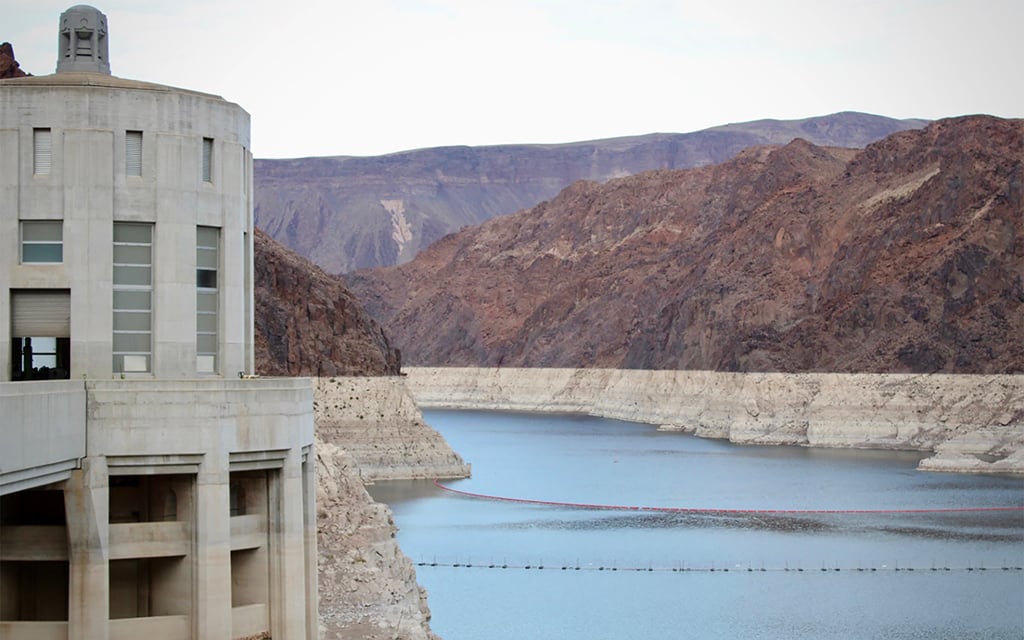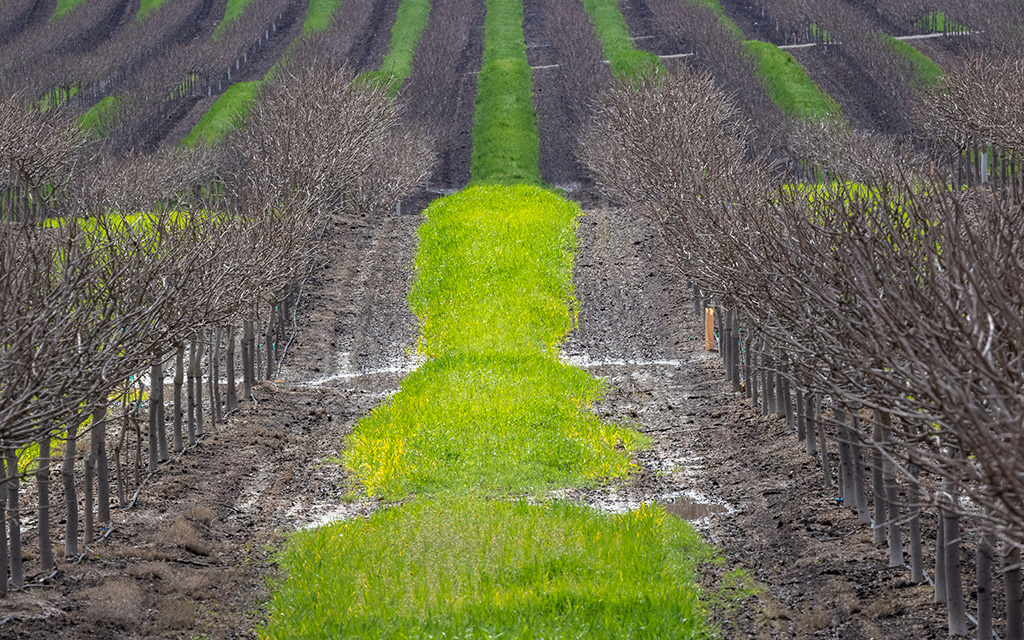
The familiar white “bathtub rings” show dropping levels on Lake Mead. The reservoir’s stores have been falling for years, setting records for new all-time lows. (Photo by Alex Hager/KUNC)
Cuts to water use along the Colorado River could be spread evenly across some Southwestern states, or follow the more than century-old priority system that currently governs water management.
Those are two alternatives in a draft plan released Tuesday by the Bureau of Reclamation, as federal officials consider ways to keep hydropower generation going at the nation’s largest reservoirs, which are being threatened by a historic drought.
The release of the federal plan comes as the seven states that rely on the river for drinking and irrigation water supply – Arizona, Colorado, Wyoming, Utah, New Mexico, Nevada and California – have been unable to come to a basin-wide consensus on how to share water cutbacks.
The federal government began to explore its options after the states’ talks failed to coalesce. That lead to Tuesday’s release of a supplemental environmental impact statement, which lays out three possibilities for changing how the states divide up the river’s water.
“In addition to equipping Reclamation with the tools it needs, this SEIS is intended to drive those conversations and negotiations forward,” said Deputy Interior Deputy Secretary Tommy Beaudreau, with the dwindling Lake Mead as a backdrop,
Beaudreau said heavy snowfall in the Rocky Mountains this past winter has provided a buffer, “But everyone who lives and works in the basin knows that one good year will not save us from more than two decades of drought.”
The SEIS suggests changes to a set of 2007 guidelines that currently manage reservoir operations. Drier-than-average conditions over the past two decades have pushed Lake Mead and Lake Powell to critically low levels, demonstrating that the existing rules are “inadequate,” Beaudreau said.
Federal officials suggest three options. One would mandate reductions in water use in Arizona, California and Nevada based on the current structure for water rights, which would protect California as one of the most senior users.
Another would levy cuts to water users in those states evenly across the board, an alternative more favored by Arizona and Nevada, where officials have advocated for a more equitable sharing of the needed use reductions.
The third option is for the federal government to take no action and risk allowing another series of dry years to push the river’s reservoirs closer to “deadpool” levels, past which water would not be able to pass through their dams.
Federal officials made clear they hope not to have to use the plan at all, whether that’s because the region experiences a string of wet winters or the states come up with commitments to reduce their reliance on the river without federal intervention.
“We’re looking to develop a true seven-state consensus in the coming months, ideally in this next 45-day period, if possible,” said J.B. Hamby, California’s top Colorado River negotiator.
If the federal government moves ahead and turns its draft plan into a final form, it could increase the likelihood of interstate lawsuits over state water rights.
“We do see that litigation could be possible,” said Tom Buschatzke, director of the Arizona Department of Water Resources. “We are committed to avoiding that litigation outcome as best we can by coming up with a collaborative solution.”
Public comment is open on the draft plan until the end of May, with a final plan expected this summer.
– This story is part of ongoing coverage of the Colorado River, produced by KUNC and supported by the Walton Family Foundation.
